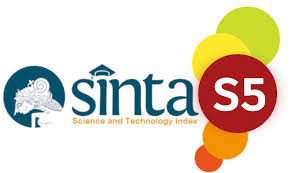The Culture of The Following of Melayu Identity in Indonesia
Abstract
Keywords
Full Text:
PDFReferences
Akinyemi, A. (2003). Yorùbá oral literature: A source of indigenous education for children. Journal of African Cultural Studies, 16(2), 161-179.
Babamuradova, L. X. (2022). The Role of Folklore in the Moral and Aesthetic Upbringing of the Individual. World Bulletin of Management and Law, 7, 101-103.
Cragoe, N. G. (2016). RPG mythos: Narrative gaming as modern mythmaking. Games and Culture, 11(6), 583-607.
Duile, T. (2020). Kuntilanak: Ghost Narratives and Malay Modernity in Pontianak, Indonesia. Bijdragen tot de taal-, land-en volkenkunde/Journal of the Humanities and Social Sciences of Southeast Asia, 176(2-3), 279-303.
Eastman, C. M. (1988). Women, slaves, and foreigners: African cultural influences and group processes in the formation of Northern Swahili coastal society. The International journal of African historical studies, 21(1), 1-20.
Fisher, M. (2003). Open mics and open minds: Spoken word poetry in African diaspora participatory literacy communities. Harvard educational review, 73(3), 362-389.
Fox, W. S. (1980). Folklore and Fakelore: Some Sociological Considerations. Journal of the Folklore Institute, 17(2/3), 244-261.
Julianto, T., Setiawan, R., & Harianja, R. F. (2021). Local-Social Wisdom in the NyadranTradition as a Means of Gathering. Budapest International Research and Critics in Linguistics and Education (BirLE) Journal, 4(2), 830-836.
Olick, J. K. (1999). Collective memory: The two cultures. Sociological theory, 17(3), 333-348.
Picart, C. J. S., & Fox, M. (2013). Beyond Unbridled Optimism and Fear: Indigenous Peoples, Intellectual Property, Human Rights and the Globalisation of Traditional Knowledge and Expressions of Folklore: Part I. International Community Law Review, 15(3), 319-339.
Salleh, M. H. (2011). Sailing the Archipelago in a boat of rhymes Pantun in the Malay world. Wacana, 13(1), 78-104.
Vickers, A. (1987). Hinduism and Islam in Indonesia: Bali and the Pasisir world. Indonesia, (44), 31-58.
Viswanathan, M., Sridharan, S., Ritchie, R., Venugopal, S., & Jung, K. (2012). Marketing interactions in subsistence marketplaces: A bottom-up approach to designing public policy. Journal of Public Policy & Marketing, 31(2), 159-177.
Winstedt, R. (1958). A history of classical Malay literature. Journal of the Malayan Branch of the Royal Asiatic Society, 31(3 (183), 3-259.
Wirawan, G., Waluyo, H. J., Suwandi, S., & Widodo, S. T. (2020). Traditional Theater Mendu of West Kalimantan as A Medium for Public Education. JP-BSI (Jurnal Pendidikan Bahasa Dan Sastra Indonesia), 5(1), 11-17.
DOI: https://doi.org/10.46336/ijeer.v1i3.293
Refbacks
- There are currently no refbacks.
Copyright (c) 2021 Sutikno Sutikno
Published By:
IJEER: Jalan Riung Ampuh No. 3, Riung Bandung, Kota Bandung 40295, Jawa Barat, Indonesia
IJEER Indexed By:
 This work is licensed under a Creative Commons Attribution 4.0 International License.
This work is licensed under a Creative Commons Attribution 4.0 International License.









